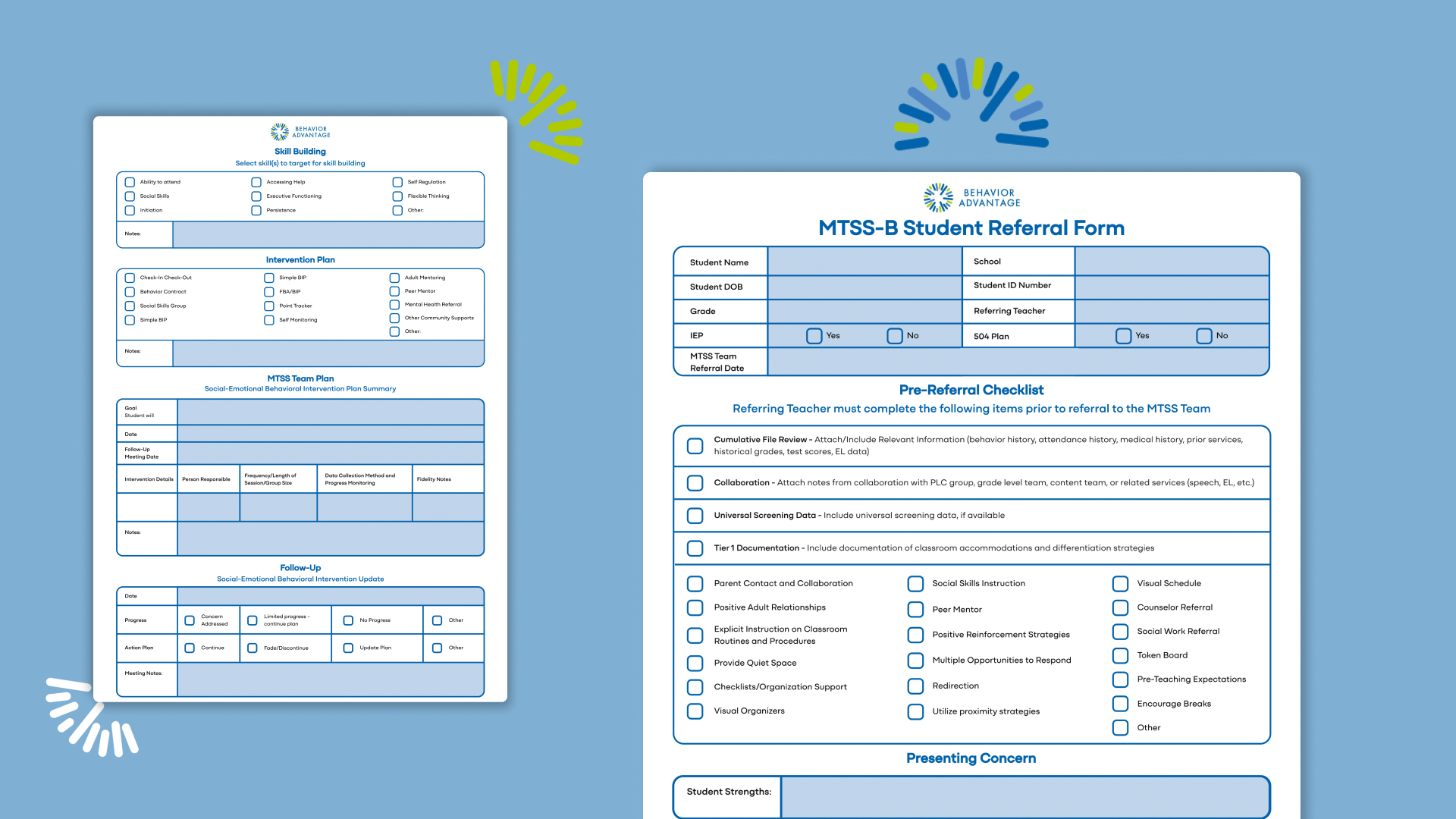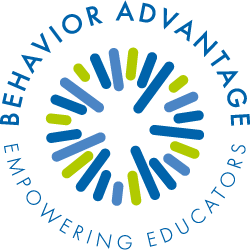The multi-tiered system of support (MTSS) is a framework schools use to make sure every student gets the right help with academics, behavior, and social-emotional well-being. It works by identifying students’ needs early and providing targeted interventions to support their success.
There’s plenty of information out there explaining what MTSS is, but our focus is on practical strategies for implementing MTSS specifically for social-emotional-behavioral (SEB) needs in your school. Since academic and behavioral challenges often go hand in hand, it’s essential to take a whole-child approach when designing interventions and support plans. The MTSS-B Student Referral Form plays a crucial role in this process and this article will offer practical tips on how to use it effectively.
Download Our MTSS-B Referral Form to Get Started

Essential Components of MTSS
MTSS includes four key elements: screening, progress monitoring, a multi-level prevention system, and data-based decision-making. As mentioned earlier, considering the whole child is essential when addressing behavioral or social-emotional interventions. However, aligning the MTSS-Behavior (MTSS-B) system with these elements can be challenging. Unlike academic interventions, behavior support isn’t always straightforward—it can be complex, nuanced, and emotionally charged. Understanding these challenges is key to effectively implementing MTSS-B in a way that meets students’ needs.
Screening in Action
Effective universal screening for social-emotional-behavioral (SEB) needs requires a coordinated effort with a clear goal for how the screening data will be used. In addition to formal screening tools, office discipline referrals, attendance records, and other data points can offer valuable insights into a student’s skill deficits (Romer et al., 2020).
Be sure to include screening data and other relevant details in the Pre-Referral Checklist section of the MTSS-B referral form. This step helps the MTSS team identify the most effective, evidence-based interventions for the student. Plus, having this information upfront keeps the team focused on solutions rather than spending time airing frustrations.
Progress Monitoring – Who Does It?
The MTSS-B Student Referral Form provides the MTSS team with the key information needed to make data-driven decisions about a student’s next steps. These decisions are documented in the Skill Building, Intervention Plan, and MTSS-B Team Plan sections of the form. To help align evidence-based interventions with student needs, check out this helpful resource: List of Behavior Intervention Strategies (PDF).
The MTSS-B Team Plan is a critical step in supporting the student—it turns discussion into action. During the MTSS team meeting, this section should be completed with a clear plan outlining the intervention, who is responsible, and how data will be collected and monitored. By the end of the meeting, both the team and the teacher should have a solid understanding of the interventions being implemented, who will track progress, and how support will be provided.
Clear communication is essential—every part of the plan should be well-defined so that expectations are clear for everyone involved. Additionally, any staff training needs related to intervention implementation or data collection should be identified and scheduled to ensure effective follow-through. This makes filling out the MTSS-B referral form easier later.
Multi-Level Prevention System – What Happens Next?
The MTSS team will set a follow-up meeting to review the student’s progress. During this meeting, the team will document the student’s level of progress in the Follow-Up Section of the form and determine next steps. Based on the data, the team may decide to continue with the current intervention if it’s working or adjust the approach by introducing more intensive support.
To ensure effective decision-making, the school’s Multi-Level Prevention System should offer a range of tiered interventions. The most efficient way to manage this is by having a menu of pre-identified interventions and selecting the most appropriate one based on the function of the student’s behavior. The MTSS-B Student Referral Form helps guide this process by providing valuable context and insight into the student’s needs.
This cycle of evaluating and adjusting interventions should continue until the student develops the necessary skills to respond to Tier 1 strategies. In some cases, more intensive interventions may ultimately be the best path forward.
For a streamlined approach to managing interventions and accessing a comprehensive intervention menu, check out how Behavior Advantage can save you time and effort with your data collection needs.
Data-Based Decision Making – Present at Every Step
Data is at the heart of every decision made throughout the MTSS process, guiding the interventions and supports for each learner. It all begins with the screening process and the data collected for the Pre-Referral Checklist, which helps inform the MTSS team’s decisions. Data continues to play a key role in evaluating the effectiveness of interventions, and it drives decisions about the next steps to support the learner’s progress.
MTTS Referral Form: Next Steps
Implementing an MTSS-B system requires strong leadership and a clear vision, along with the ability to get buy-in from all stakeholders. This success depends on trust, transparency, and clear expectations—everyone, from classroom teachers to the MTSS-B team to administrators, must be fully committed to the process, including using the MTSS-B Referral Form to support the team in focused conversation. MTSS-B isn’t just a program; it’s a philosophy that supports creating systems to meet learners where they are and help them develop the skills needed to succeed academically and behaviorally.
Ready to see how the Behavior Advantage platform and a team of experienced BCBAs can help guide you through every step of the process? Schedule a demo today!









